Forget the store-bought sambar powder packets! This homemade sambar masala is easy to prepare and will make your sambar super flavorful and delicious.
Sambar powder is also known as sambar podi in the Tamil language.
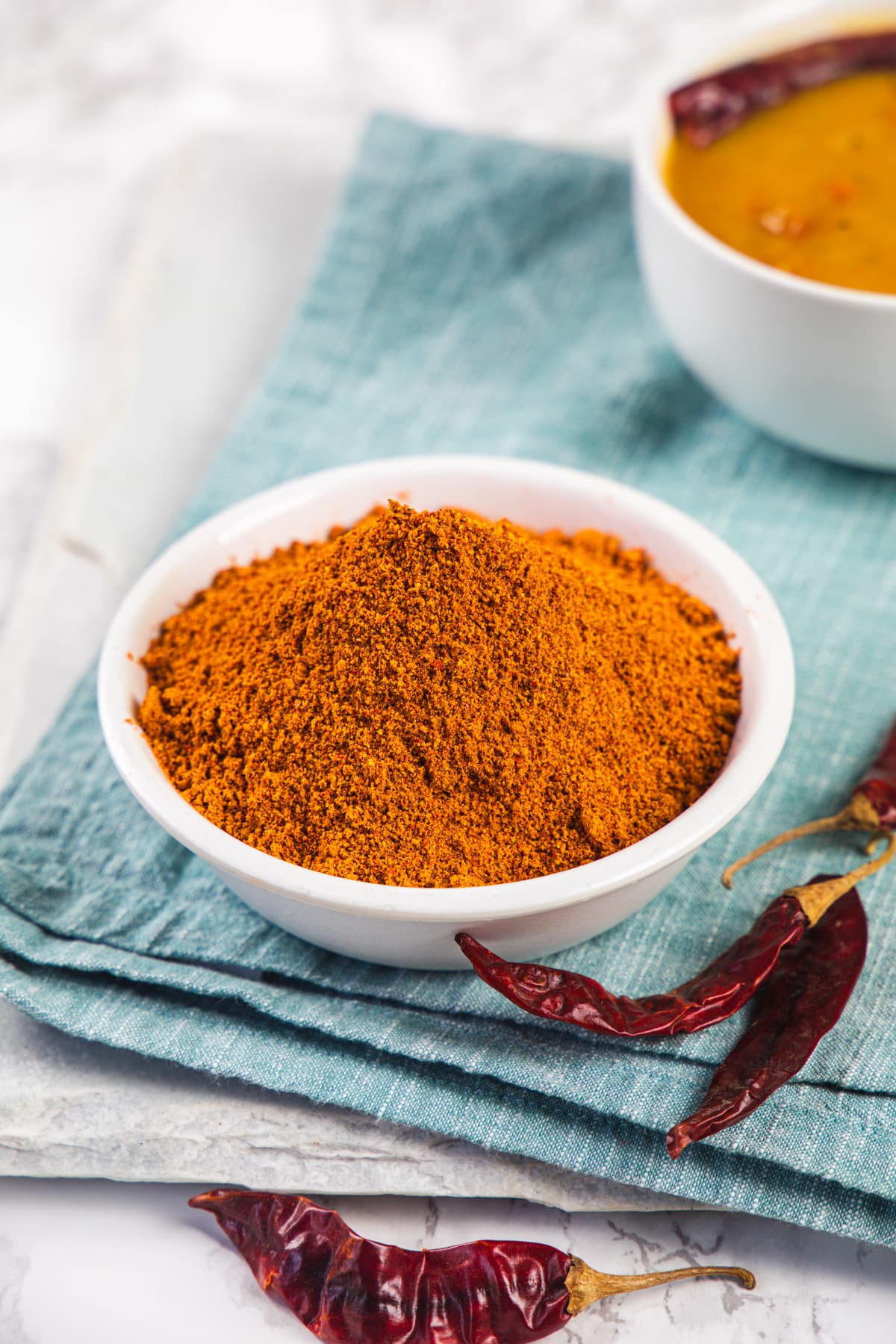
Jump to:
❤️ About This Sambar Powder Recipe
Sambar powder is an important spice blend found in most South Indian kitchens (and nowadays every Indian kitchen that loves their idli, dosa, coconut chutney, and sambar).
It is prepared by roasting and grinding various spices, lentils, and dried chilies.
In the olden days, people used to make a large batch that lasts for a year. They roast the spices at home and take them to the nearby grinding mill to grind them into powder.
But nowadays we use a blender or mixer to make this sambar masala powder recipe at home. I usually make a large jarful of sambar masala that lasts me up to 3 months. FYI, I make sambar once a week. So if you are making sambar more frequently then you can double or triple the recipe as needed.
Why Homemade Sambar Powder?
- Quick: The whole process takes under 30 minutes and that lasts up to 4-6 months.
- Easy to make: The process is super simple. Just dry roast everything one by one, let them cool down and grind them into a powder. There is no way you’ll mess this up.
- Fragrant and fresh: When we make spice powders at home, it is more aromatic, flavorful, and fresh tasting than store-bought packets.
🧾 Ingredient Notes For Sambar Masala
Here is a pic of the ingredients you’ll need to make a homemade sambar powder recipe.
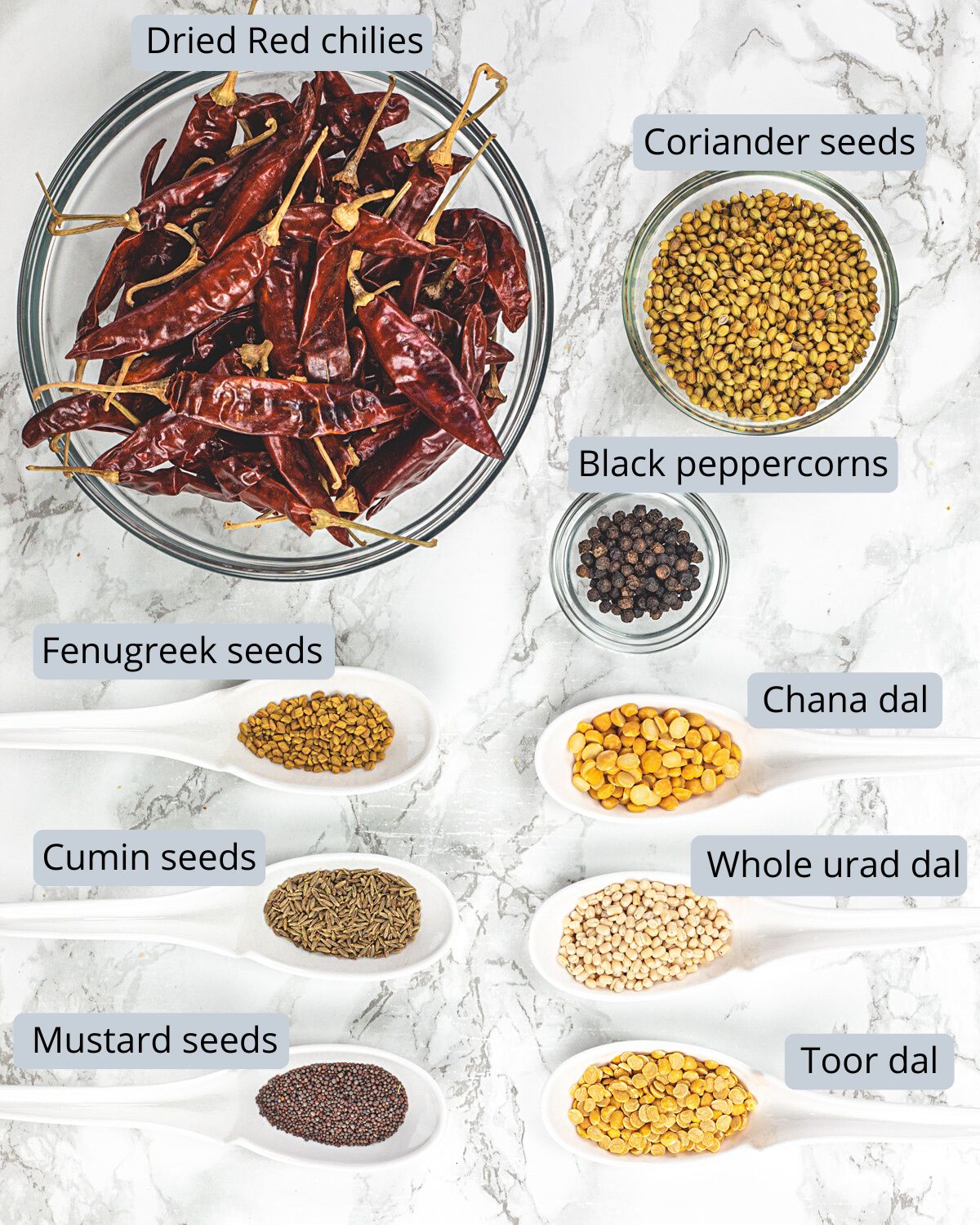
- Dried red chilies:
- It gives a spicy taste.
- The amount of chilies can be adjusted as per your preferred spice level.
- The given amount makes medium spicy sambar.
- For a mild taste, use Kashmiri red chilies or Bydagi chilies. These give a less spicy taste but give amazing deep red color.
- Coriander seeds: This is the base of sambar masala powder. It gives a nice flavor as well as an aroma to this spice mix.
- Lentils: You’ll need chana dal (bengal gram), urad dal (black gram), and toor dal (pigeon peas). All three are used in equal amounts.
- Black peppercorns: It adds heat to the masala.
- Other basic spices: You’ll need cumin seeds, mustard seeds, and fenugreek seeds. All of these are basic and easy-to-find spices in Indian kitchens.
NOTE: Some like to add turmeric powder to their sambar powder recipe. I do not add, instead, I use turmeric powder while making sambar recipe.
👩🍳 How To Make Sambar Powder? (Stepwise)
1) First prep the chilies. Remove and discard the stems of dried chilies.
Wipe down the chilies using a damp paper towel. Spread it on the kitchen towel and let it dry out. Or keep in the sun if possible. This step is optional and it depends on how dusty or dirty your chilies are.
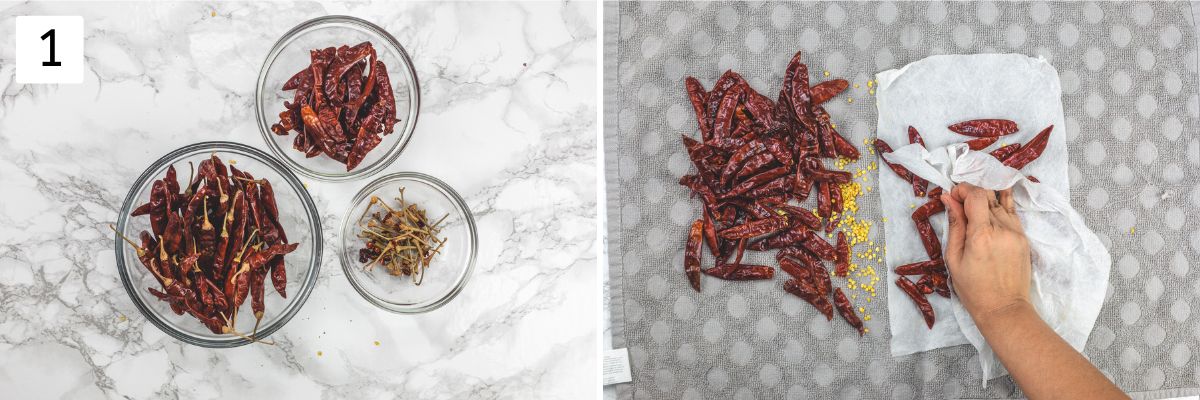
2) Start dry roasting everything one by one on medium-low heat. Take coriander seeds in a pan and dry roast with stirring constantly until they are golden brown. Once roasted they will be super aromatic. Remove it to a plate.
3) In the same pan, add toor dal and dry roast similarly until golden brown. Make sure not to burn the lentils.
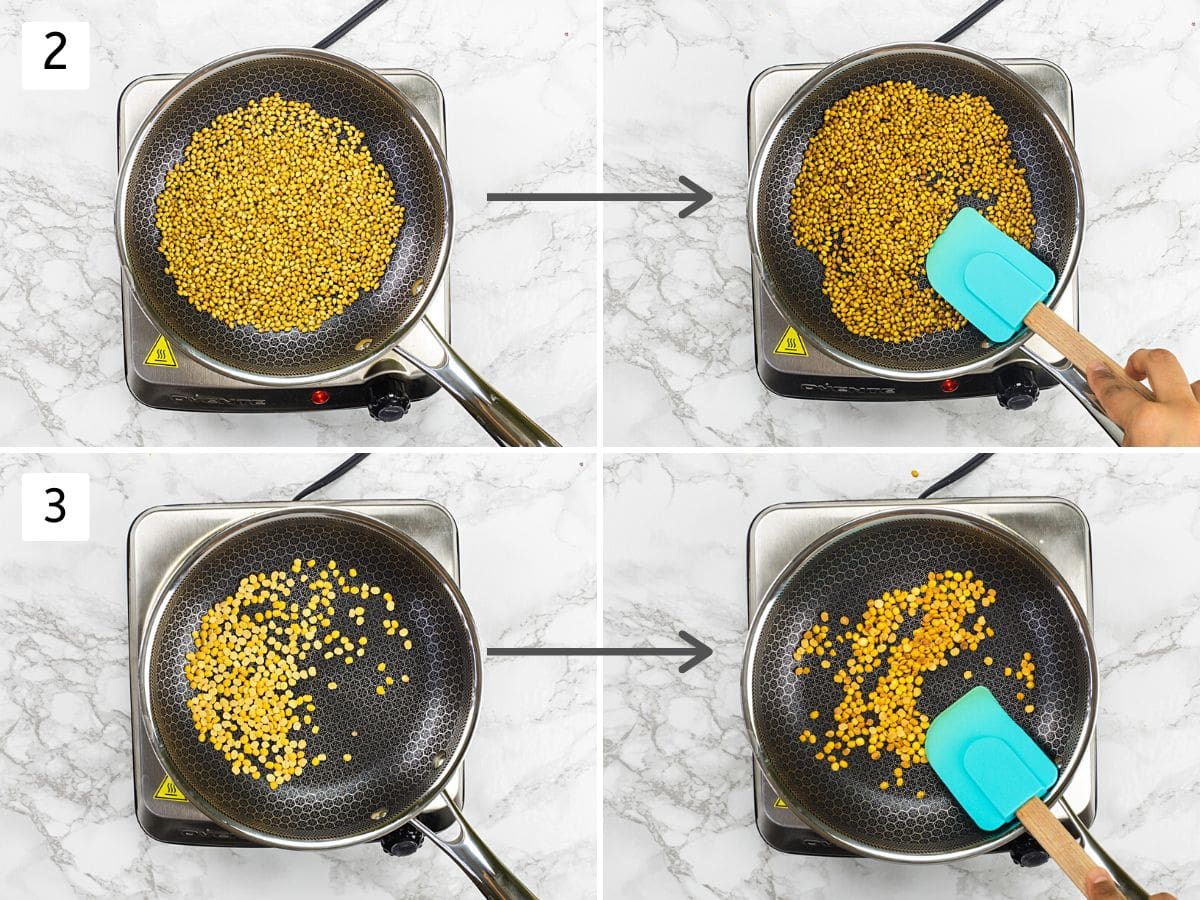
4) Next is chana dal and roast until golden brown.
5) Next is urad dal and similarly roast until light brown in color.
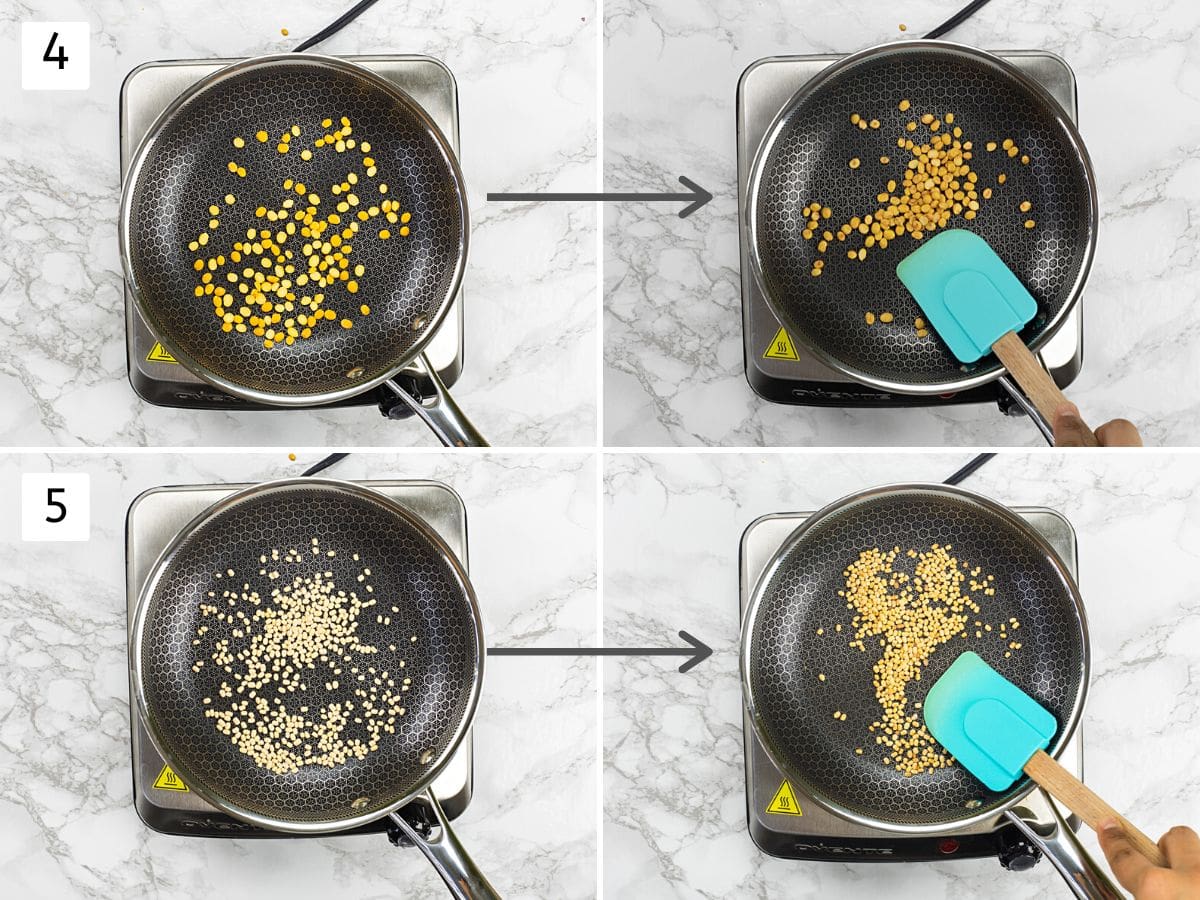
6) Now dry roast mustard seeds. Once roasted they turn lighter in color (almost white-gray hue on them) and they start to splutter. Remove it to a plate as soon as it starts to splutter.
7) Next are methi seeds and roast until golden brown. Do not burn them otherwise they taste weird in sambar masala powder.
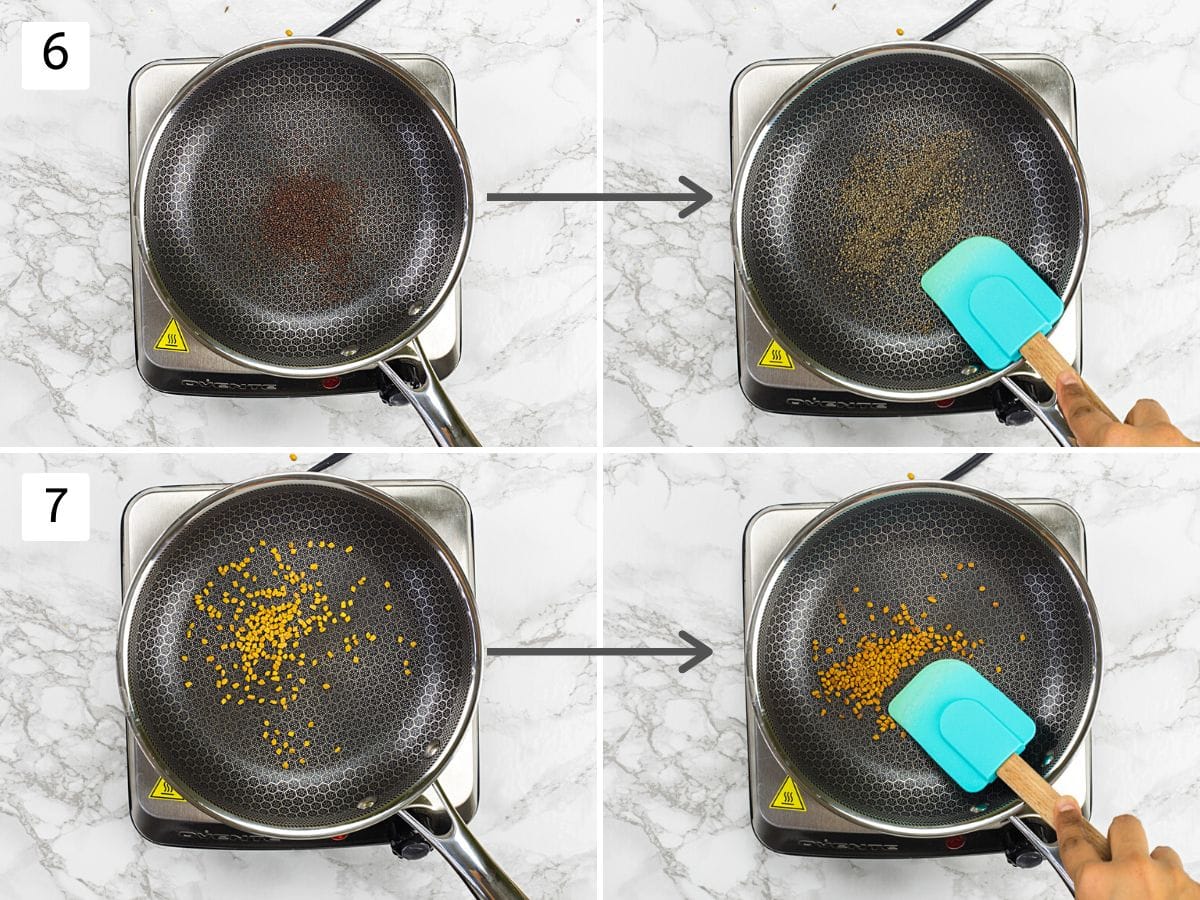
8) Next, dry roast cumin seeds until darker in color and become aromatic.
9) Dry roast peppercorns for around 2 minutes, there won’t be any color change.
10) Dry roast dried red chilies until warm and moisture-free. Make sure not to over-roast or burn them otherwise you’ll start sneezing.
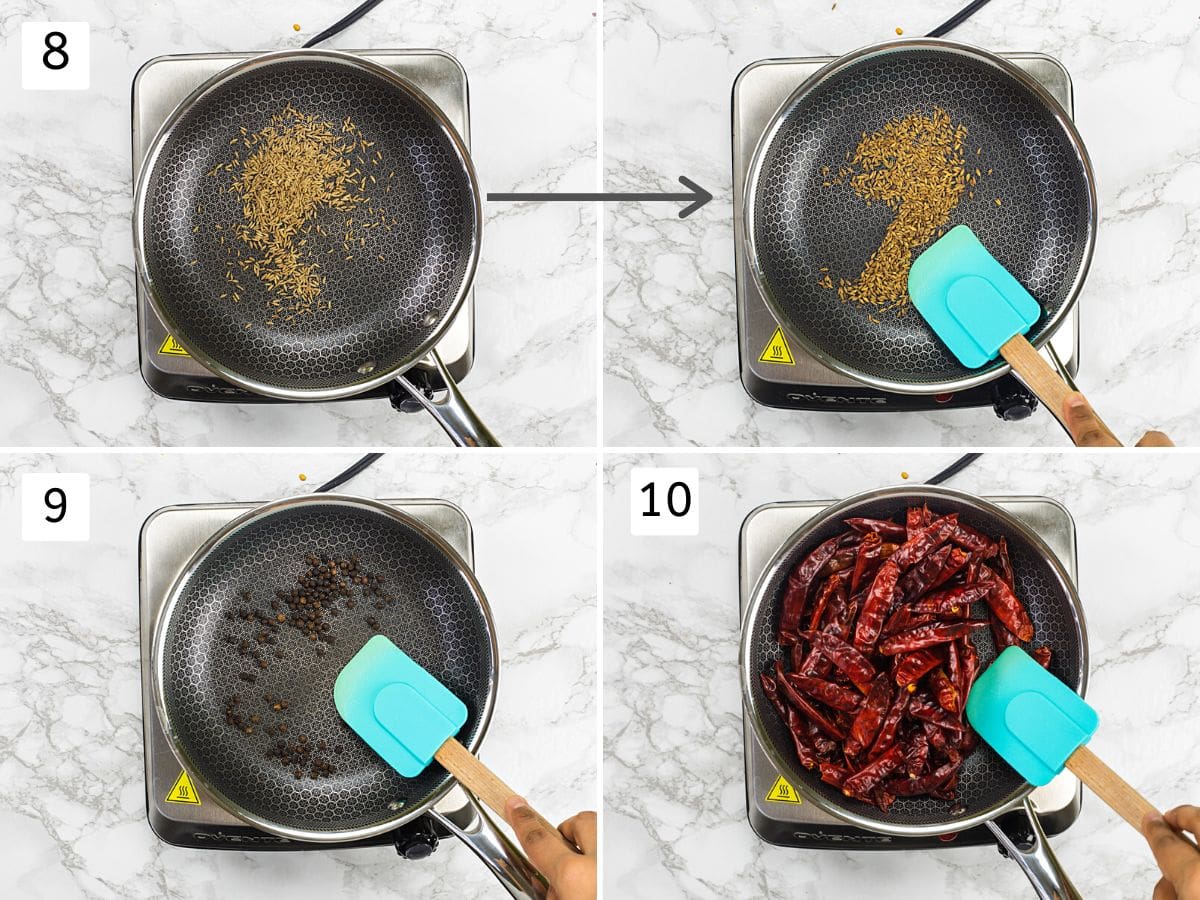
11) Let all the dry roasted spices cool down completely to room temperature.
12, 13, 14) Then transfer them to a blender or grinder and make a smooth powder.
- Spice or coffee grinder: Those are small and you’ll have to do it in batches and mix everything well at the end.
- Vitamix blender: Trust me, it does make a fine powder (you can see in the pic below). You may have to stop in between and push the spices down that are stuck on the sides of the jar.
- Indian style grinder (Preethi): I have used it in the past and of course, it works perfectly fine.
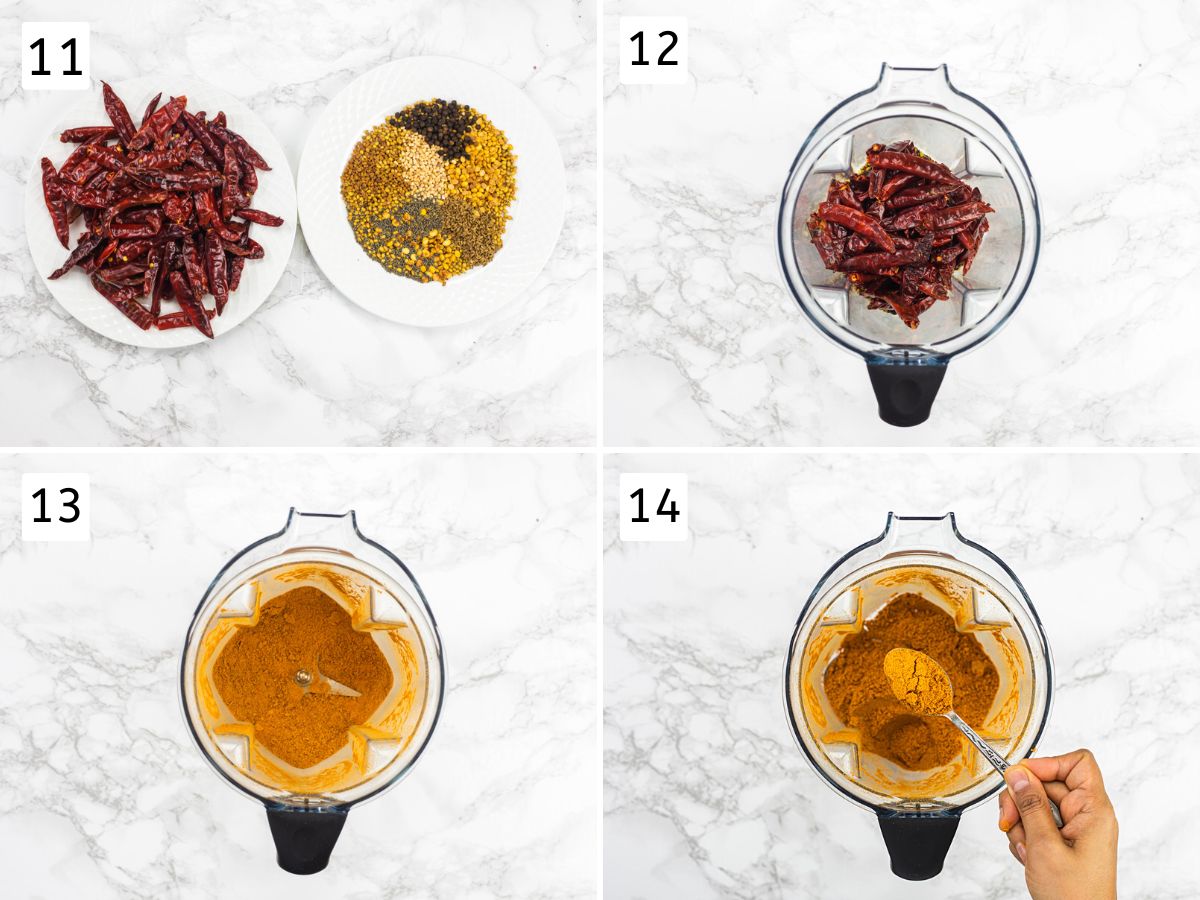
💭 Expert Tips For Sambar Masala Powder
- Always dry roast on medium-low heat.
- Keep stirring constantly while roasting for even browning,
- Do not burn the spices and lentils while dry roasting. The flavor of burnt spices may ruin the flavor of sambar podi.
- The color of the sambar powder depends on the type and amount of chilies you’ve used.
- Let the spices cool down completely before grinding otherwise the steam from the warm spices will create moisture in the masala and reduces the shelf-life of the spice mix.
- If making a large batch of sambar masala powder then you may need to grind it in batches.
🥣 Storage & Shelf-life Of Sambar Powder
- Store in a clean, dry (moisture-free), air-tight glass jar or container. I mostly use a mason jar.
- Keep the jar in a cool dry space, away from sunlight.
- It stays fresh for up to 6 months.
- If you’re living in a humid climate then I suggest storing it in the refrigerator.
- Moisture is the big enemy when it comes to shelf life, so make sure to use a clean dry jar to store it and make sure that the spoon is not wet while using the masala.
- If you’re using sambar powder frequently and made a big batch then I would suggest storing it in a big container. And keep another small container or add in your masala dabba for daily use and refill it as needed. By doing so, you are not opening the big jar frequently and so the masala stays fresh for a longer period.
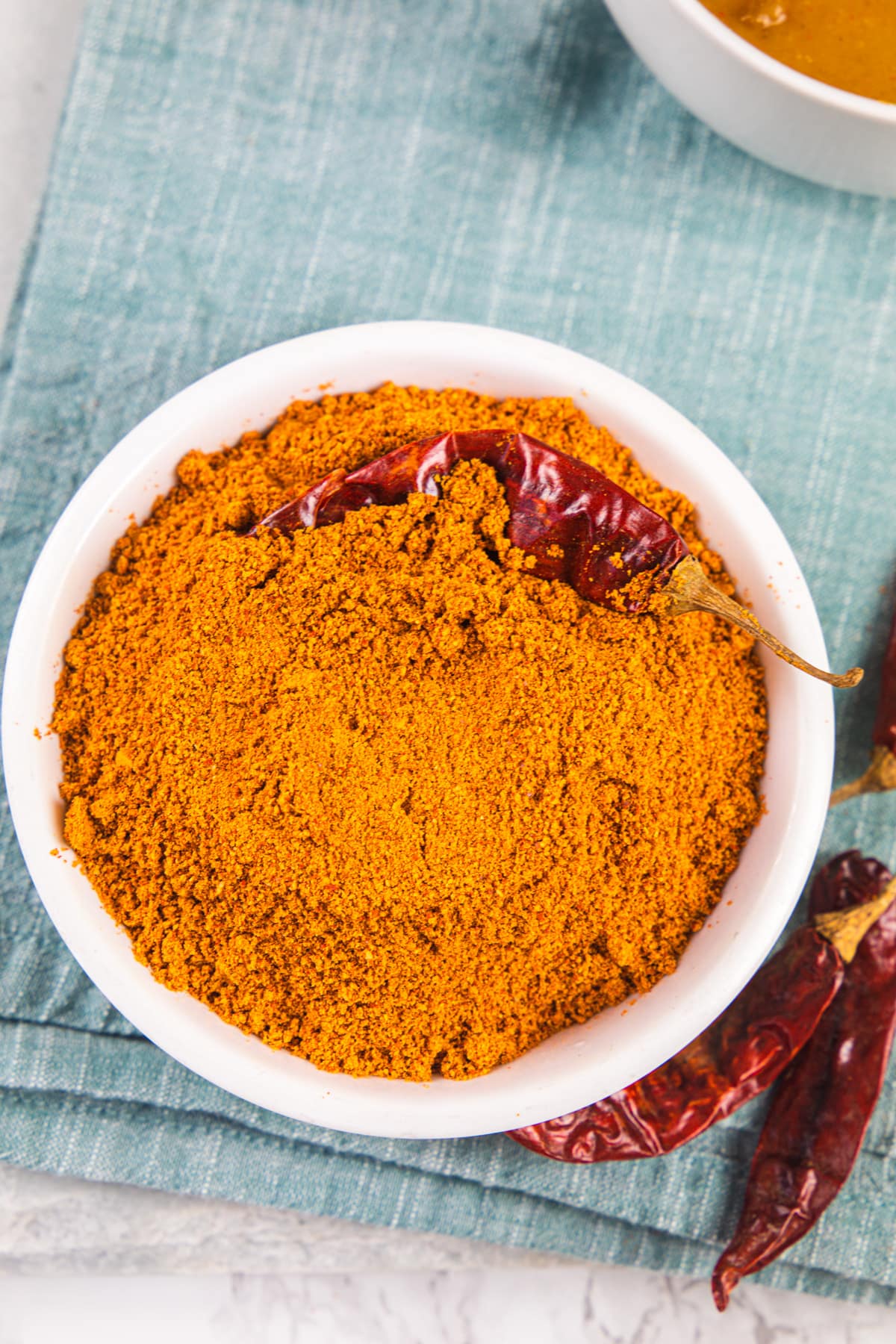
Check Out Other Spice Powders
Did you try this sambar powder recipe (Sambar podi)? I’d love to hear about it! Leave a review in the comment section below.
Recipe Card
Sambar Powder Recipe (Sambar Masala)
Ingredients
- 150 grams Dried red chilies
- ¾ cup Coriander seeds (sabut dhaniya) 50 grams
- 2 tablespoons Arhar dal (toor dal or split pigeon peas) 30 grams
- 2 tablespoons Chana dal (Split bengal gram) 25 grams
- 2 tablespoons Whole Urad dal (Black lentils) , skinless 30 grams
- 2 teaspoons Mustard seeds 7 grams
- 2 teaspoon Fenugreek seeds (methi dana) 6 grams
- 1 tablespoons Cumin seeds 10 grams
- 4 teaspoons Black peppercorns 12 grams
Instructions
- First prep the chilies. Remove and discard the stems of dried chilies.
- Wipe down the chilies using a damp paper towel. Spread it on the kitchen towel and let it dry out. Or keep in the sun if possible. This step is optional and it depends on how dusty or dirty your chilies are.
- Start dry roasting everything one by one on medium-low heat. Take coriander seeds in a pan and dry roast with stirring constantly until they are golden brown. Once roasted they will be super aromatic. Remove it to a plate.
- Next dry roast lentils (toor dal, chana dal, and urad dal) separately until light golden in color. Remove it to the same plate.
- Next dry roast mustard seeds. Once roasted they turn lighter in color (almost white-gray hue on them) and they start to splutter. Remove it to a plate as soon as it starts to splutter.
- Next are methi seeds and roast until golden brown. Do not burn them otherwise they taste weird.
- Next, dry roast cumin seeds until darker in color and become aromatic.
- Dry roast peppercorns for around 2 minutes, there won’t be any color change.
- Dry roast dried red chilies until warm and moisture-free. Make sure not to over-roast or burn them otherwise you’ll start sneezing.
- Let all the dry roasted spices cool down completely to room temperature.
- Then transfer them to a blender or grinder and make a smooth powder.
Notes
- Always dry roast on medium-low heat.
- Keep stirring constantly while roasting for even browning.
- Do not burn the spices and lentils while dry roasting. The flavor of burnt spices may ruin the flavor of sambar powder.
- The color of sambar powder depends on the type and amount of chilies you’ve used.
- Let the spices cool down completely before grinding otherwise the steam from the warm spices will create moisture in the masala and reduces the shelf-life of the spice mix.
- Storage: Store in a dry, clean airtight container and keep in a cool, dry space away from sunlight. If the climate is humid then store it in the refrigerator.
- Shelf life: It stays good for 6 months.

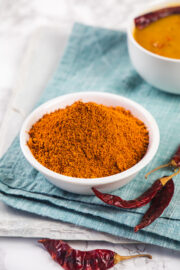
zehra
Hi konan, I am glad that I found your website. I was also happy to find some recipes of masala. I am Home-Science graduate from College of Home Science, Nirmal Niketan College in Mumbai.
Kanan
Glad to know that masala recipes are helpful
Christine Brown
Nice recipe. I made it and used it twice - once in a bean soup with lentils and kabocha/potatoes and once in a sort of stir fry also with Kabocha squash. It's very nice. Thank you.
Kanan Patel
Very glad to hear that you liked it.